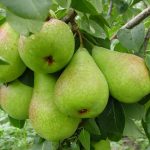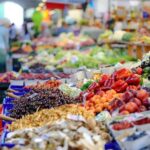Agronometrics in Charts: Peru's agricultural sector saw its lowest performance since 1992

In this installment of the ‘Agronometrics In Charts’ series, Sarah Ilyas studies the state of Peru's agricultural sector. Each week the series looks at a different horticultural commodity, focusing on a specific origin or topic visualizing the market factors that are driving change.
In 2023, Peruvian agriculture faced one of its most formidable challenges in over three decades, grappling with global fertilizer shortages, rampant inflation, adverse weather conditions in both the northern and southern regions, and water stress. This convergence of factors culminated in the sector recording its worst performance in more than thirty years. With a workforce representing more than a fifth of the country's employees, the recovery of this vital sector is paramount for Peru's economic stability and prosperity.
 Source: USDA Market News via Agronometrics.
Source: USDA Market News via Agronometrics.
(Agronometrics users can view this chart with live updates here)
The repercussions of the agricultural crisis were starkly evident as agricultural production plummeted by 4.1% in 2023, marking its first negative growth in fourteen years and the sharpest decline since 1992. The impact was particularly pronounced in agro-export crops and those intended for domestic consumption.
Notably, blueberry production bore the brunt of the adverse weather conditions, experiencing a staggering 30% contraction, primarily due to intense rains and high temperatures in northern regions such as La Libertad and Lambayeque. This decline rippled through other key export crops such as olives, asparagus, and mangoes, offsetting modest gains in grapes, avocados, and coffee.
Looking ahead to 2024, the specter of the El Niño phenomenon looms large, posing a substantial risk to agricultural productivity. Studies suggest that the event could lead to a reduction of up to 0.25% in agricultural production, with northern Peru anticipated to bear the brunt of its impact. Although recent weeks have seen a moderation in climate risks, the adverse effects of El Niño could persist for nearly a year, disrupting planting cycles and exacerbating existing challenges.
Amidst these challenges, the imperative for investing in large-scale productive infrastructure projects becomes apparent. Initiatives such as Chavimochic III, slated to double the country's agro-export frontier, offer promising avenues for revitalizing the sector.
The Chavimochic III project aims to irrigate about 100,000 hectares of agricultural land in Peru. The sluggish progress of numerous investment projects, however, with a staggering 281 projects paralyzed by the end of 2023, underscores the urgent need for concerted efforts across governmental levels.
Additionally, the impasse surrounding the Majes Siguas II irrigation project in Arequipa further underscores the obstacles hindering the sector's recovery. The Majes-Siguas project in Peru involves the diversion of water from the Colca River to the Siguas River for irrigation, with plans to extend the water source to include the Apurimac River.
The road to agricultural recovery in Peru necessitates a multifaceted approach encompassing investment in critical infrastructure, promotion of crop diversification, and proactive measures to mitigate climate risks. With agriculture serving as a cornerstone of the Peruvian economy and a significant source of employment, concerted efforts are imperative to navigate through the challenges of 2024 and beyond.
In our ‘In Charts’ series, we work to tell some of the stories that are moving the industry. Feel free to take a look at the other articles by clicking here.
All pricing for domestic US produce represents the spot market at Shipping Point (i.e. packing house/climate controlled warehouse, etc.). For imported fruit, the pricing data represents the spot market at Port of Entry.
You can keep track of the markets daily through Agronometrics, a data visualization tool built to help the industry make sense of the huge amounts of data that professionals need to access to make informed decisions. If you found the information and the charts from this article useful, feel free to visit us at www.agronometrics.com where you can easily access these same graphs, or explore the other 21 commodities we currently track.














































